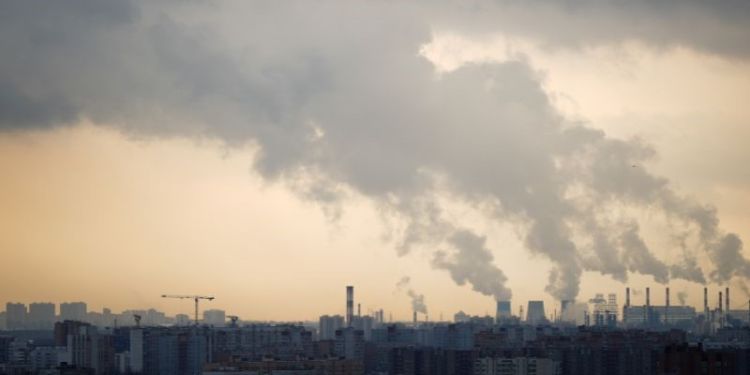Cutting greenhouse gases will reduce number of deaths from poor air quality

Up to 250,000 deaths from poor air quality could be prevented annually in central and western Europe by 2050 if greenhouse gas emissions are drastically reduced, say researchers.
A study by atmospheric scientists at the University of Leeds has revealed that the number of deaths could be significantly reduced, but only if there is a strong focus on reducing greenhouse gases and air pollutants.
The strategies that policymakers take to mitigate climate change will have considerable implications for human exposure to air quality, not least of which are the number of deaths.
As well as finding that strong climate mitigation would result in large reductions in air quality mortality, the team has also discovered that it reduces the inequitable burden of air quality mortality in more deprived parts of Europe. Their findings are published today (6 May) in the journal Earth’s Future
Lead author Connor Clayton, a PhD researcher in the School of Earth and Environment and the Priestley Centre for Climate Futures, said: “The strategies that policymakers take to mitigate climate change will have considerable implications for human exposure to air quality, not least of which are the number of deaths.
“But they also urgently need to consider the persistent inequity of exposure between wealthier and more deprived populations, which continues to be an issue even though air pollution has reduced across Europe.”
Poor air quality is the largest environmental risk factor for early deaths, leading to an estimated 8 million deaths per year globally, according to recent analysis by the World Bank and the World Economic Forum.
The World Health Organisation recently stated that almost every organ in the body can be impacted by air pollution and that, due to their small size, some pollutants penetrate the bloodstream via the lungs and circulate throughout the entire body, leading to systemic inflammation and carcinogenicity.
Exposure to air pollution can lead to strokes, ischaemic heart disease, cardiovascular disease, chronic obstructive pulmonary disease, lung cancer, pneumonia, diabetes, cognitive impairment, dementia and neurological diseases. There is also some evidence linking air pollution exposure to the increased risk for adverse pregnancy outcomes, such as low birth weight.
Estimations of future mortality in Europe from air pollution often reach hundreds of thousands per year, but vary depending on the methodology used.
The team examined the health impacts in Europe in 2014 and 2050 from exposure to harmful fine particulate matter, which can penetrate deep into the lungs, and surface-level ozone, which is formed when sunlight interacts with certain pollutants like nitrogen oxides.
They looked at three scenarios, with low, medium and high levels of action taken by policymakers to combat climate change. A detailed atmospheric chemistry model was used to simulate the future air quality in 2050.
They found that deprived regions of Europe currently have proportionally higher death rates from air pollution than less deprived regions, but that reductions in emissions would reduce that inequity.
A medium level of action to combat climate change proved to be more beneficial to deprived regions because there was more focus on emissions reductions from the housing, industry and transport sectors.
A high level of action, which also included reductions in agricultural emissions, would lead to improvements in air quality across the continent as well as an improvement in equity and far larger reductions in mortality overall.
When looking at 2014, the researchers found that fine particulate matter was usually higher in central and eastern Europe than in western Europe, with particularly high concentrations in the Po Valley in Italy, in Bosnia and Herzegovina, and in southern Poland.
In future scenarios where action was taken to curb greenhouse gas emissions, the amount of fine particulate matter decreased, with the largest reductions in central Europe – particularly southwest Germany – and in some urban centres, such as Paris.
Reductions in fine particulate matter were highest in the scenario where CO2 emissions were cut severely, reaching net zero after 2050. This scenario led to 90% reductions in southwest Germany and Paris.
Dr Jim McQuaid, an Associate Professor of Atmospheric Composition in Leeds’ School of Earth and Environment, who led the research, said: “This work provides evidence that there are direct health benefits from moving towards a low-carbon economy.
“Air pollutants and the climate warming gases and aerosols are one and the same, it is very much two sides of the same coin. It was particularly good to see that those who suffer most from air pollution currently benefit most from the benefits of the drive to a net-zero world.”
The researchers believe their results suggest directions that policymakers could take to ensure public health is protected and is managed equitably as Europe considers how to mitigate against climate change.




